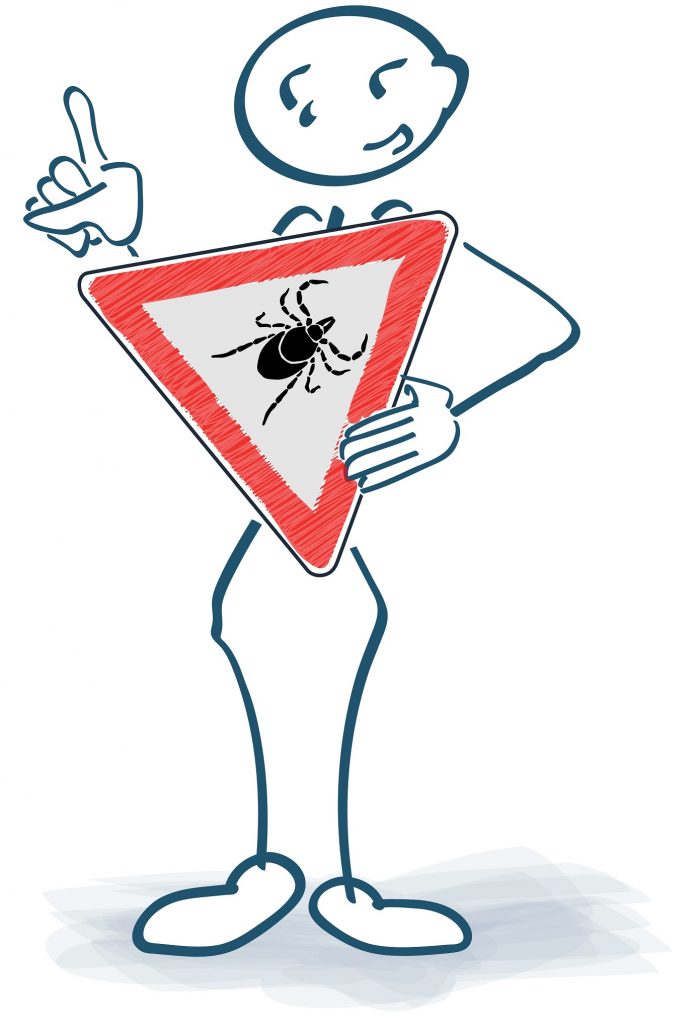June 2019 – wasn’t it a great one? We enjoyed the sun, the heat, the ice-cream that we urgently needed to survive, and the vacation days we had. Where did you go and which mode of travel did you choose? This hot summer and California flair made me think of a mode of travel which all in all has become unpopular in Germany: tramping.

Tramping – a charming and of yesteryear mode of travel where strangers share a vehicle for their journey. They connect briefly, form an agreement, travel, and once the destination is reached, wave goodbye and part with a smile. Weren’t these wonderful times? I enjoy to think of tramping like this. But is this really how it works? Well, I would say, it depends. Not only because tidiness wasn’t really one of the criteria determining which car you would hop on to and whether or not your driver was a smoker, had showered recently, or enjoyed some delicious fatty fast-food without venting. Tramping required negotiation regarding the mode of travel and cost share since this transport took place in accordance.
However, is this how tramping has always been? Not really, I would say. Therefore, let’s go back in time and think of those guys who may be the oldest trampers on earth. Small guys that outlived millions of people since they started tramping and still successfully do so today, being committed to this lifestyle and travelling without their carrier’s agreement: Ticks, of course. A provocation of our immune system when we enjoy the great outdoors, lie in the grass, watch the sky, enjoy the sun, and expect undesirable company the least. However, there are a couple of facts about those nasty little guys which are of interest to immunologists. As many of you probably know, ticks are designated as dangerous virus and bacteria carriers. This is true, of course. Ticks are known to carry bacteria and viruses and transfer them during their blood meal. However, their bites do not generally cause health problems. Mostly, their bites have rarely serious or lasting effects. Nevertheless, like when choosing the guy you would accompany during your road trip, awareness is key. While ticks can carry and transmit many pathogens worldwide, there are in general two main diseases which ticks transmit in Germany: the lyme disease, also referred to as lyme borreliosis, and tick-borne encephalitis (TBE) (1,2).
Tramper and transfer
Lyme disease results from infection with the bacterium Borrelia burgdorferi, leading to symptoms like fever, headache, fatigue, and skin rash. Stunningly, if left untreated, it can even spread and harm joints, the heart, and the nervous system (3). Characteristic for an infection is a ring-shaped rash that develops around the area of the tick bite. If you observe this, you should see a doctor to test for an infection by B. burgdorferi.
The second most relevant infectious disease transmitted by ticks in Germany is TBE. It is a human viral infectious disease involving the central nervous system, caused by a member of the Flaviviridae family, namely the tick-borne encephalitis virus (4). This neurological disorder can manifest as mild fever, meningitis, encephalitis, or even meningoencephalitis, ranging from mild to dramatic disease progression. Of note, in 2017 the Robert Koch Institute recorded 500 cases of TBE in Germany, which is the second highest number of incidents ever (5)! While around 85% of incidents occurred in southern Germany, TBE-transmitting ticks are migrating more and more north, spreading over Germany (5). How come?
Tramping and temperature

In Europe, the castor bean tick (Ixodes ricinus) is the principal vector of pathogens causing lyme borreliosis and tick-borne encephalitis. To calculate the risk of tick bites, it is tempting to try and estimate the density of I. ricinus to expect for the year. Between 2009 and 2017, nymphal I. ricinus (immature ticks) were counted in southern Germany at monthly intervals to make a forecast of the annual nymphal tick density. For 2017, the forecast resulted in 187 predicted nymphs per 100 m2 and indeed 180 nymphs were observed. For 2018 the relatively high number of 443 I. ricinus nymphs per 100 m2 was predicted (6), pointing towards an increase in tick numbers in Germany.
Furthermore, since climate change results in increased temperatures, the amount of ticks per year is estimated to further increase in the future! In fact, already between 2002 and 2006 an increase in TBE incidence by 137.5% was detected in Poland, the Czech Republic, Switzerland, and Germany (8). In general, air temperatures above 6-7°C, a humidity rate of >85%, and a large number of hosts for their blood meal are the main requirements for a ticks’ happiness. And as you may guess correctly, climate change optimizes the environment for ticks. Around a decade ago, increased winter activity of ticks was reported in Sweden and Germany (11–20). Moreover, a northward movement of ticks has been reported in Norway (17), Sweden (14–16), and Germany (18), as well as the occurrence of ticks at higher altitudes than before (13). Worryingly, from basically all European risk countries higher incidence of TBDs (tick-borne diseases) were reported (9,10). And last but not least: We seem to have welcomed a new tramper in town. Last year, a tick occured in Germany that was previously only found in Africa, Asia and Southern Europe: Hyalomma ticks (H. marginatum and H. rufipes). In their distribution area, these ticks are known to transmit the Crimean-congo hemorrhagic fever. Luckily, the individuals found in Germany did not carry the virus (21).
Tramping – requirements and recommendations

You may ask now what we should keep in mind when travelling. Well, get an attitude – use repellent. Furthermore, as tramper you should check yourself and your belongings after your journey and wear clothing made for your adventure. For further ideas regarding protection, input how to deal with a tick bite, and which exact symptoms of infection you should be aware of, check the literature links (2, 4, 7) and keep in mind: There is a vaccination against TBE (which is recommended the further south you live or go on vacation in Germany and Europe), but unfortunately none for lyme disease. Enjoy, stay tuned, and good luck!
Author: Larissa Mühlenbeck
Literature
(1) https://www.ncbi.nlm.nih.gov/books/NBK279243/
(2) https://www.zecken.de/en/frequently-asked-questions
(3) https://www.cdc.gov/lyme/index.html
(4) https://www.cdc.gov/vhf/tbe/index.html
(5) https://www.thelocal.de/20180307/tick-borne-viruses-in-germany-last-year
(6) Brugger K, Walter M, Chitimia-Dobler L, Dobler G, Rubel F (2018) Forecasting next season’s Ixodes ricinus nymphal density: the example of southern Germany 2018. Exp Appl Acarol. doi: 10.1007/s10493-018-0267-6.
(7) https://www.iamat.org/country/germany/risk/lyme-disease
(8) Süss J, Klaus C, Gerstengarbe FW, Werner PC (2008) What makes ticks tick? Climate change, ticks, and tick-borne diseases. J Travel Med 15(1): 39-45. doi: 10.1111/j.1708-8305.2007.00176.x.
(9) World Health Organization (2004) The vector‐borne human infections of Europe. Their distribution and burden on public health. Copenhagen, Denmark: World Health Organization.
(10) Süss J (2003) Epidemiology and ecology of TBE relevant to the production of effective vaccines. Vaccine 21:19–35.
(11) Dautel H, Dippel C, Kämmer D, Werkhausen A, Kahl O (2008) Winter activity of Ixodes ricinus in a Berlin forest. Int J Med Microbiol 298:50-54.
(12) Bormane A, Lucenko I, Duks A, Mavtchoutko V, Ranka R, Salmina K, Baumanis V (2004) Vectors of tick‐borne diseases and epidemiological situation. Int J Med Microbiol 293(Suppl 37):36–47.
(13) Materna J, Daniel M, Metelka L, Harčarika J (2008) The vertical distribution, density and the development of the tick Ixodes ricinus in mountain areas influenced by climate changes. Int J Med Microbiol 298(Suppl 1):25-37.
(14) Lindgren E, Tälleklint L, Polfeldt T (2000) Impact of climate change on northern latitude limit and population density of the disease‐transmitting European tick Ixodes ricinus. Environ Health Perspect 108:119–123.
(15) Lindgren E, Gustafson R (2001) Tick‐borne encephalitis in Sweden and climate change. Lancet 358:16–18.
(16) Lindgren E, Jaenson GT (2006) Lyme borreliosis in Europe: influences of climate and climate change, epidemiology, ecology and adaptation measures. Regional Office. Copenhagen, Denmark: WHO.
(17) Skarpaas T, Golovljova I, Vene S, Ljøstad U, Sjursen H, Plyusnin A, Lundkvist A (2006) Tickborne encephalitis virus, Norway and Denmark. Emerg Infect Dis 12(7):1136-1138.
(18) Süss J, Klaus C, Diller R, Schrader C, Wohanka N, Abel U (2006) TBE incidence versus virus prevalence and increased prevalence of the TBE virus in Ixodes ricinus removed from humans. Int J Med Microbiol 296 (Suppl 40):63-68.
(19) Daniel M, Kriz B, Valter J, Kott I, Danielova V (2008) The influence of meteorological conditions of the preceding winter on the incidence of tick-borne encephalitis and Lyme borreliosis in the Czech Republic. Int J Med Microbio 298:60–67.
(20) Bennet L, Halling A, Berglund J (2006) Increased incidence of Lyme borreliosis in southern Sweden following mild winters and during warm, humid summers. Eur J Clin Microbiol Infect Dis 25(7):426-432.
